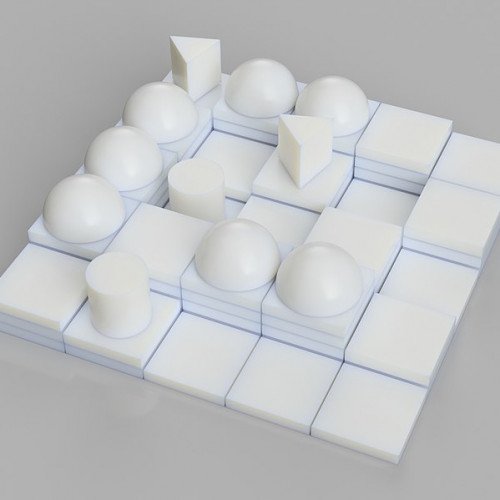BUL VS SANTORINI

BUL
Bul (also called Buul, Boolik or Puluc) is a running-fight board game originating in Mesoamerica, and is known particularly among several of the Maya peoples of Belize and the Guatemalan highlands. It is uncertain whether this game dates back to the pre-Columbian Maya civilization, or whether it developed in the post-colonial era after the arrival of the Spanish conquistadores. Stewart Culin described the game in the 24th Annual Report of the Bureau of American Ethnology: Games of North American Indians published in 1907. R. C. Bell referred to the game in Board and Table Games from Many Civilizations. Both of these descriptions were based on the eyewitness accounts of others. Lieve Verbeeck, a linguist studying Mayan language, witnessed the modern version of the game being played by Mopan and Kekchi Maya in Belize It is not known exactly when the game was developed or what the original rules were as very few records survived the invasion by the conquistadors between the 15th and 17th centuries. Stewart Culin organised the games in his anthology into those he thought had an influence from Europe in their creation. Bul is not listed among these, and in his opinion the game must have developed before Europeans arrived in Central America. There are a variety of ways to play the game, as Verbeeck's account shows. The game could be played by two people, or by two equal-sized teams. The overall objective is to capture and subsequently kill the playing pieces of the opposition, so the game is in essence a war game. The playing area is divided into equal spaces using rods placed parallel to each other. The two players have control of a base at either end of the play area. The players take an even number of stones or figurines (or any suitable playing piece) and place them in their respective bases.
Statistics for this Xoptio

SANTORINI
Santorini is an abstract strategy board game for 2-4 players designed and released in 2004 by Gordon Hamilton and republished via Kickstarter in 2016 by Roxley Games. Inspired by the architecture of cliffside villages on Santorini Island in Greece, and primarily designed for two players, the game is played on a grid where each turn players build a town by placing building pieces up to three levels high. To win the game, players must move one of their two characters to the third level of the town. Each turn of play involves moving one of your two pieces around a 5-by-5 grid each turn and then placing a tile adjacent to the moved piece, building up that spot of the board. On subsequent turns, pieces may be moved onto one of these built-up tiles, but only one level up at a time. Pieces may also be moved down any number of levels. Players may also place a special dome tile on top of a three-level building, which prevents a player from moving onto that spot for the remainder of the game. The primary winning condition is to get one of your pieces onto the third level, though players may also win if their opponent is unable to make a move. The Roxley Games version of Santorini introduced a god powers variant, which gives each player a unique way to break the rules. After being directly released and sold by Hamilton in 2004, Roxley Games ran a Kickstarter campaign during March-April 2016, drawing over 7,100 backers and raising over C$700,000, the most successful Kickstarter campaign ever based in Alberta. While the original release used plain white blocks as components, the Roxley version featured an enhanced cartoon-like look to the game, which Hamilton credits for success of the Kickstarter campaign. The game was released in retail outlets in January 2017.